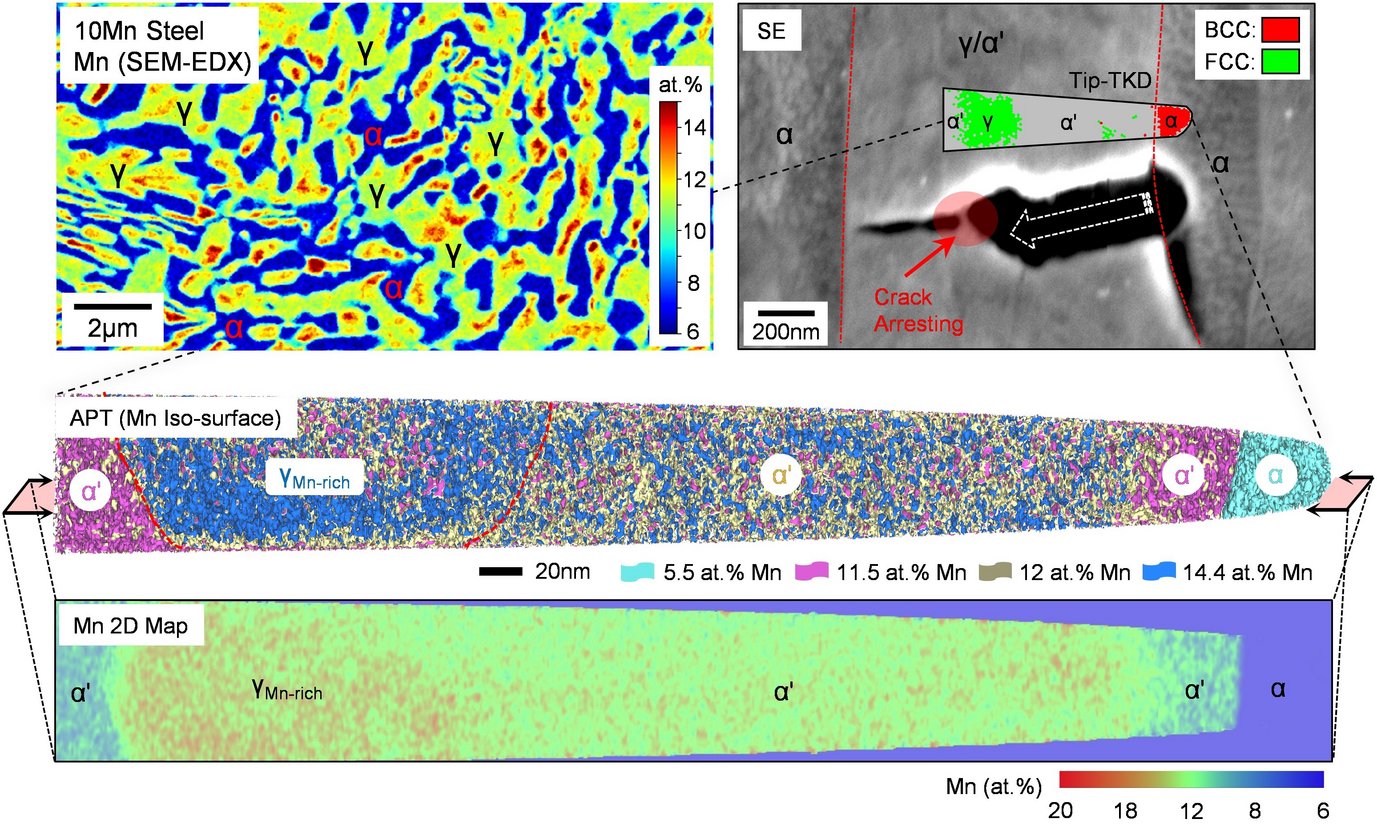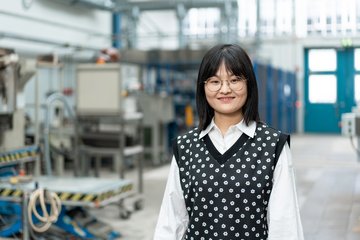Paving the way into the hydrogen age by understanding and overcoming hydrogen embrittlement
Binhan Sun leads new research group “Hydrogen embrittlement in high-performance alloys” at MPIE
Hydrogen, the most abundant element in the universe, offers a charming sustainable energy solution that can substitute carbon-based fuels and thus reduce carbon dioxide emissions. The infrastructures and transport means required for the implementation of a hydrogen economy need affordable and mass-produced high-strength and sustainable materials. However, when the small and light hydrogen atoms make the way into a high-strength alloy, the material’s load-bearing capacity is abruptly lost--a phenomenon known as hydrogen embrittlement. This embrittlement effect often occurs in an unpredictable manner. Thus, hydrogen embrittlement can basically threaten any industrial and societal applications in a hydrogen economy that aims to use high-performance alloys to make structural components.
Steps towards understanding hydrogen embrittlement
Dr. Binhan Sun is a researcher in the department “Microstructure Physics and Alloy Design” and now heads the newly established group “Hydrogen embrittlement in high-performance alloys”. The mission of the research group is to understand hydrogen embrittlement and ultimately design alloying/microstructure concepts with enhanced hydrogen-resistance. Therefore, the underlying mechanisms of hydrogen embrittlement are studied, covering three fundamental aspects in this field:
- hydrogen trapping and diffusion,
- hydrogen-defect interactions and
- hydrogen-induced damage evolution.

The second task of the group is to perform thermodynamics-based microstructural design in order to enhance alloys’ hydrogen embrittlement resistance at a minimum cost of their mechanical performance. The current strategies include producing hydrogen-trapping sites to suppress hydrogen diffusion and/or forming tough microstructural ingredients to suppress hydrogen-induced crack nucleation, growth and percolation (one example shown in Fig. 1). The research is carried out by state-of-the-art characterization techniques down to the atomic level, including simulations in collaboration with simulation groups at MPIE. Ultimately, the goal is to promote the development of high-performance and hydrogen-tolerant alloys that are urgently needed for the dawn of the hydrogen age.












